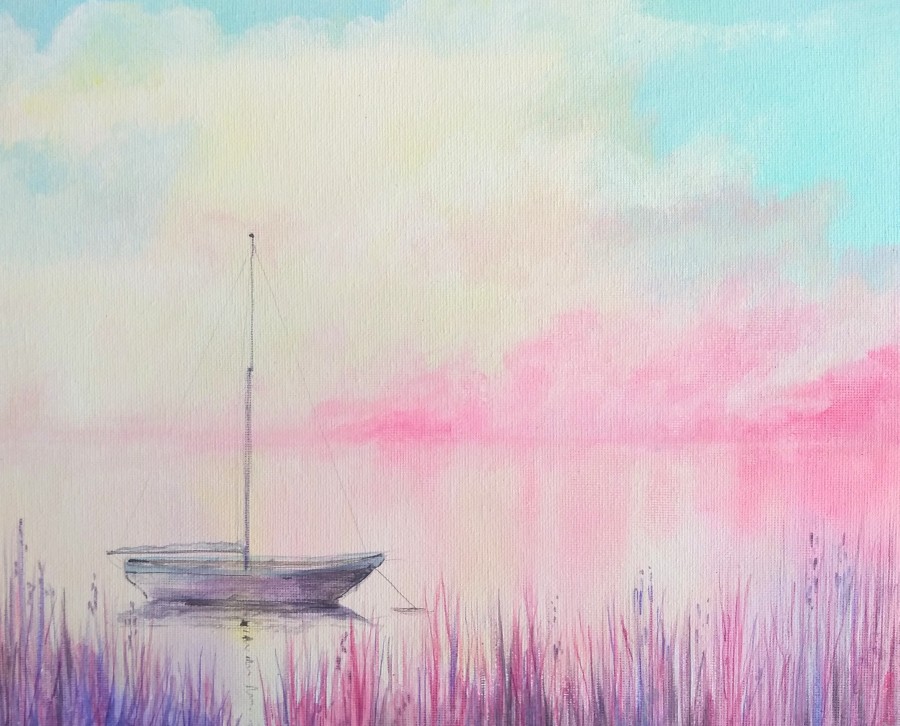Shadow Dancer by Gerard Tunney
Shadow Dancer by Gerard Tunney is a stunning piece that showcases the artist’s skill in using colour and composition to create a unique and captivating image. The painting, which is done in acrylic on canvas, features a predominantly yellow and orange-red colour scheme, giving it a warm and inviting feel.
One of the most striking features of the artwork is the wispy, airy quality that permeates the entire piece. This is achieved through the use of light brushstrokes and a gentle blending of colours that gives the painting a dreamlike quality.
The artwork features two figures – a violinist and a ballet dancer – both of whom are central to the composition. The violinist is shown playing her instrument, while the ballet dancer seems to be moving gracefully to the music. However, what makes this painting particularly interesting is the fact that the ballet dancer is disappearing off the edge of the canvas, leaving only her shadow behind on the studio wall.
This creates a sense of movement and fluidity in the painting, as if the figures are caught in a moment of time that is constantly slipping away. The use of shadow also adds an interesting layer of depth and complexity to the painting, as the viewer is forced to consider the interplay between light and dark, and the role that shadows play in shaping our perception of the world around us.
Overall, Shadow Dancer is a stunning example of contemporary art that showcases the artist’s skill and vision. Its warm colour scheme, dreamlike quality, and intriguing composition make it a true masterpiece that is sure to captivate and inspire viewers.
VIEW MORE PAINTING BY GERARD TUNNEY
Question to the artist about the artwork
What inspired you to create this particular artwork?
I have painted ballet as a subject numerous times, (along with many others, starting with Edgar Degas), So, how to do something different without being eccentric. The theme of the shadow on the wall throws up fresh possibilities and fresh possibilities is what all artists strive for. The accompanied violinist suggests the theme of dance and the theatrical, as he dances a little jig to the sound of the music.
Can you discuss the significance of the disappearing ballet dancer in the painting?
Most paintings use the dancer as the focal point and also the subject. In this painting the shadow becomes the focal point of the painting and unusually, is more important than the dancer.
How did you choose the colour palette for this piece, and what effect were you hoping to achieve with it?
The palette is deliberately restricted to warm ochres to understate the colours and give greater emphasis to the shadow which becomes more central.
What role do you think shadows play in this artwork, both literally and metaphorically?
A lot of my recent work has centred around different types of reflections – particularly in relation to the city and the fractured, prismatic reflections in windows. The shadow is an extension of the same pictorial idea with the added implication of the shadow being a metaphor for the ethereal and the disembodied.
Are there any other artists or works of art that influenced your approach to creating this piece?
Probably Richard Diebenkorn who distils the real and the abstract possibilities in a subject and combines them to create something sublime. A lot of my work is to do with transformation and change, so l am always looking for those same abstract possibilities in my subjects.
VIEW MORE PAINTINGS BY GERARD TUNNEY


